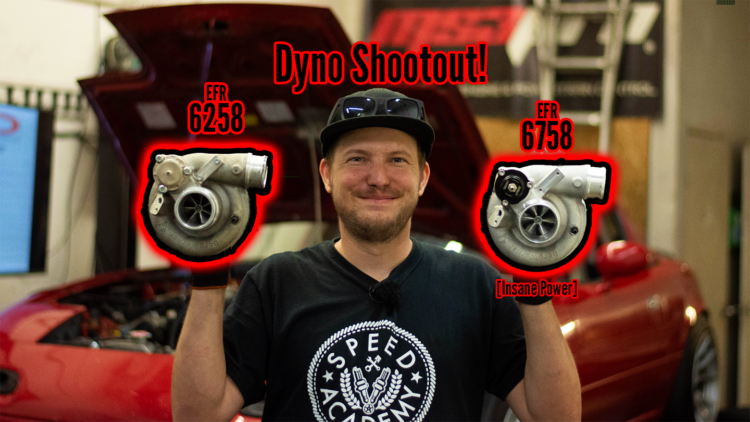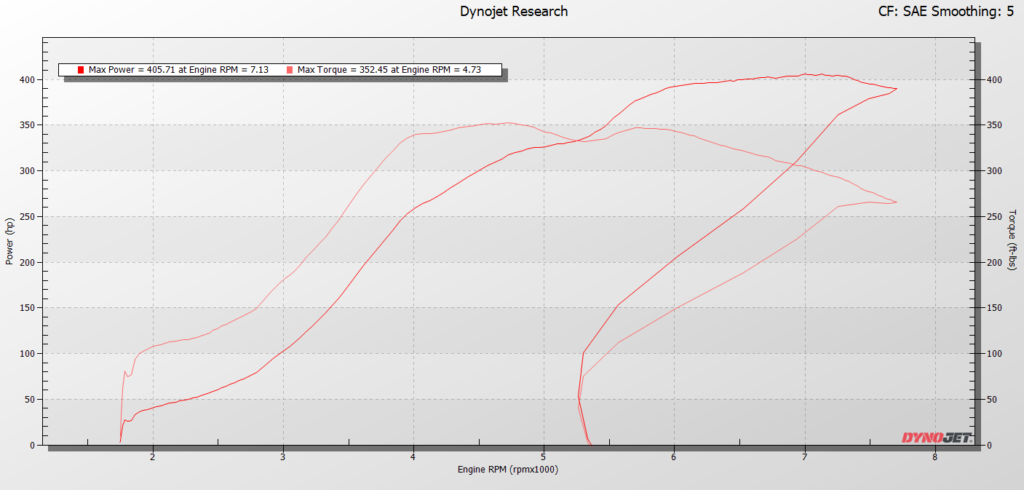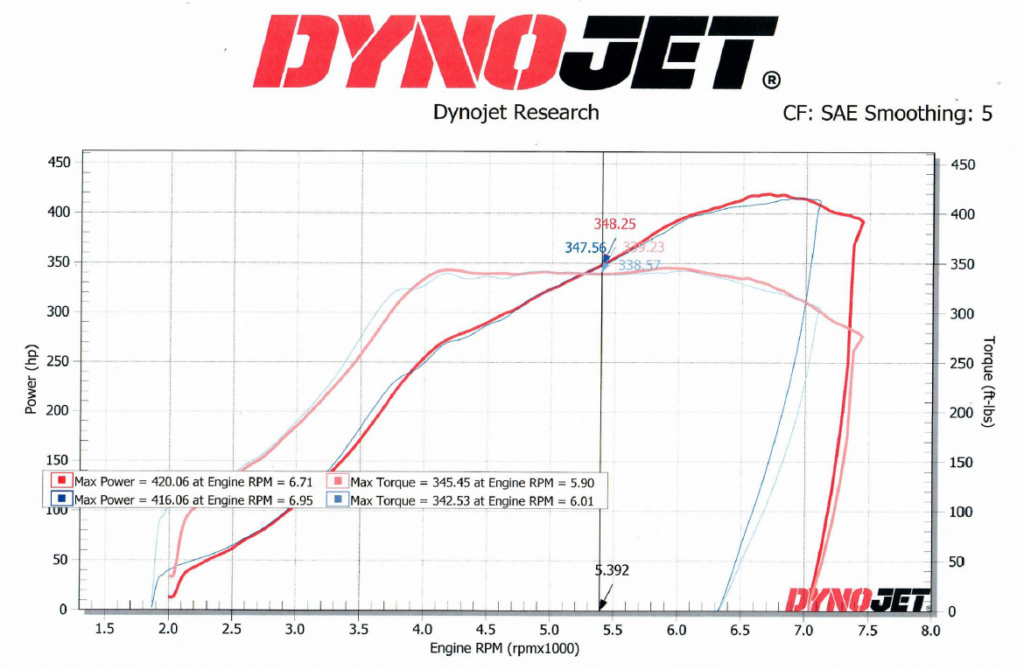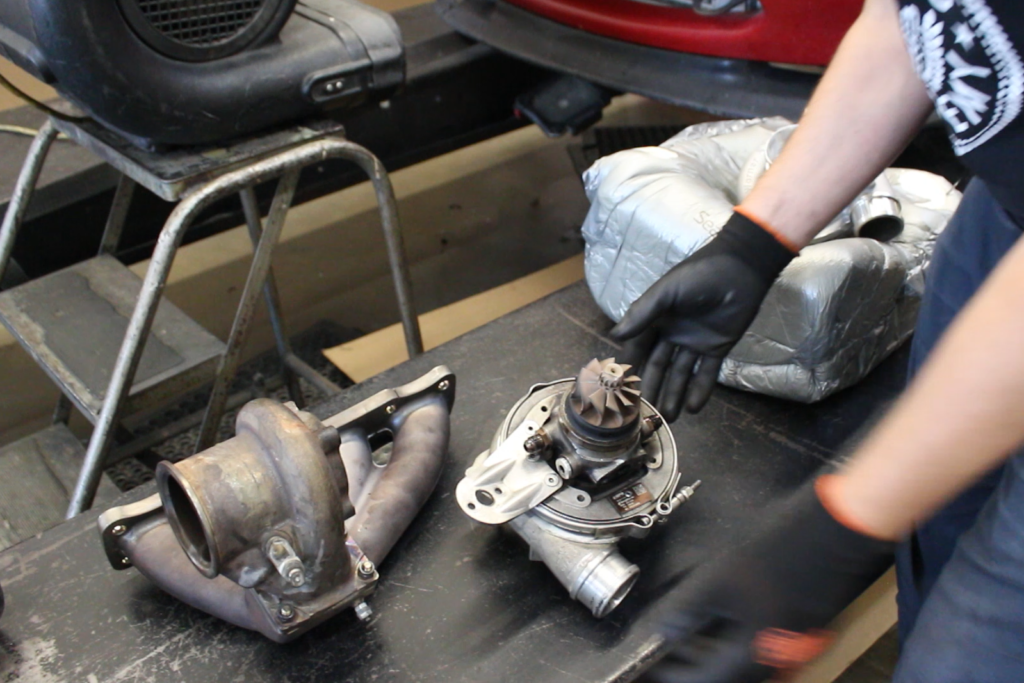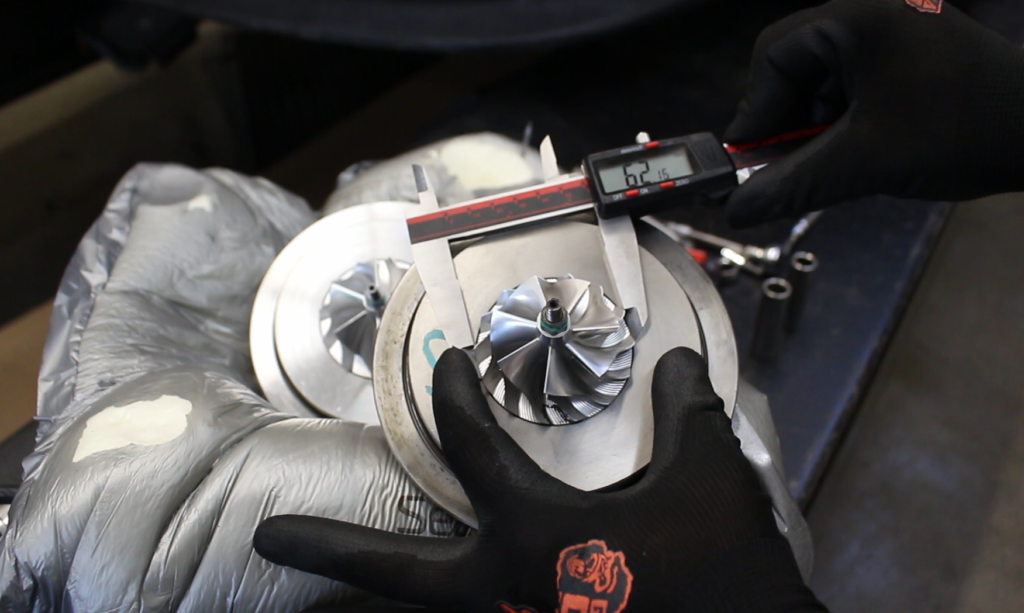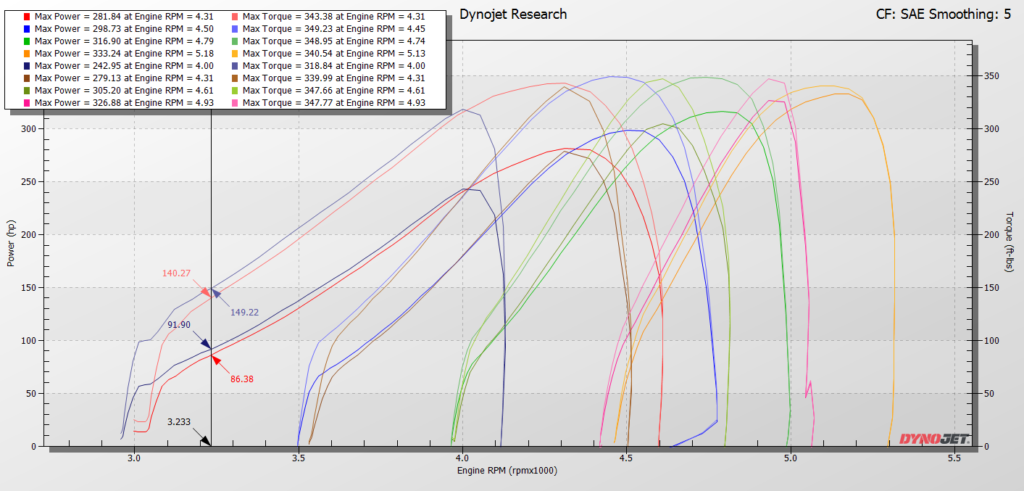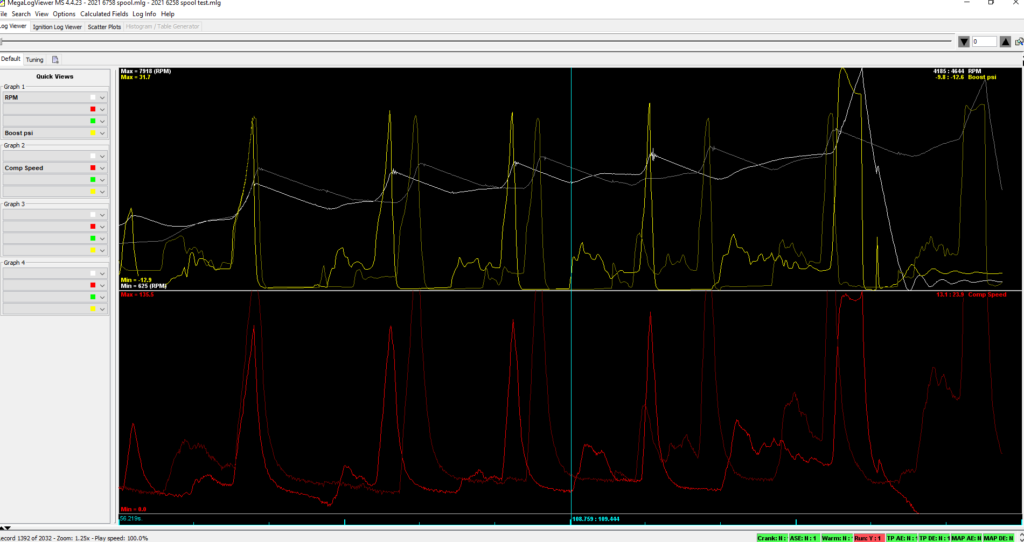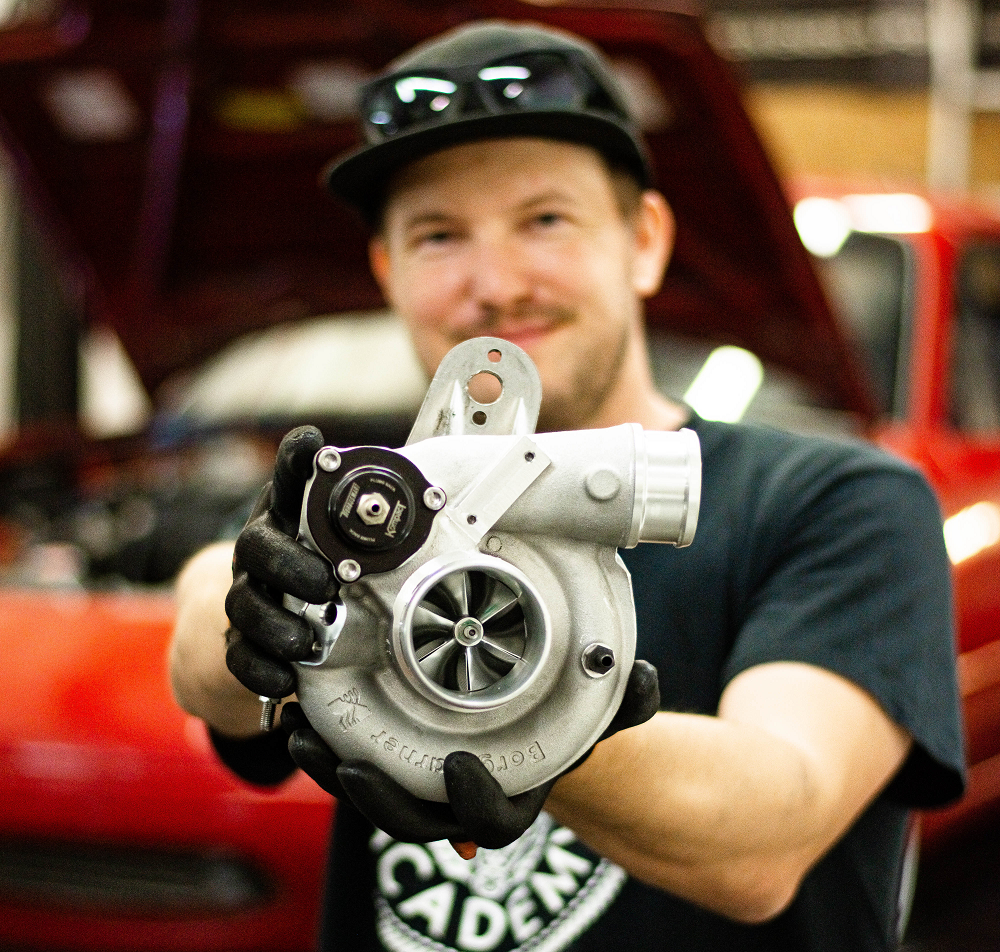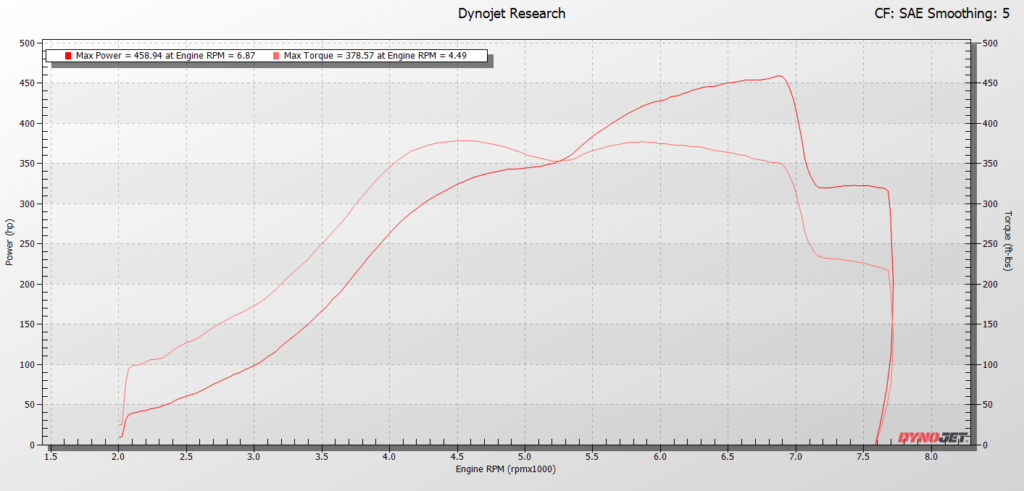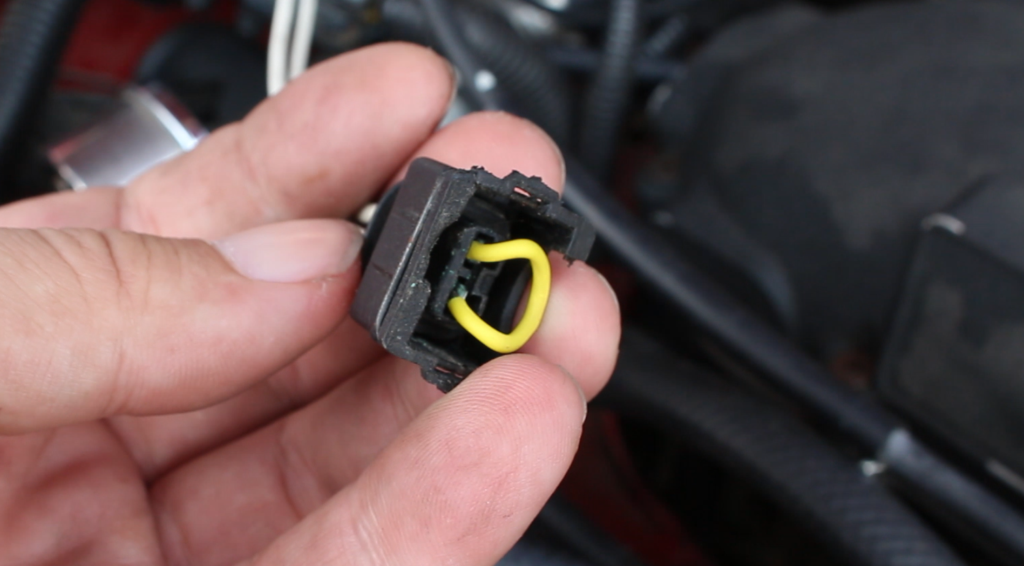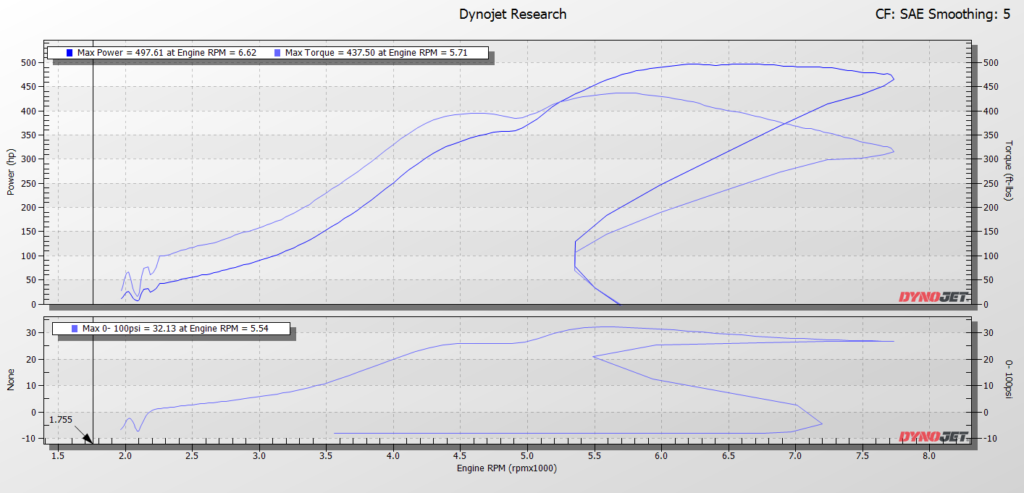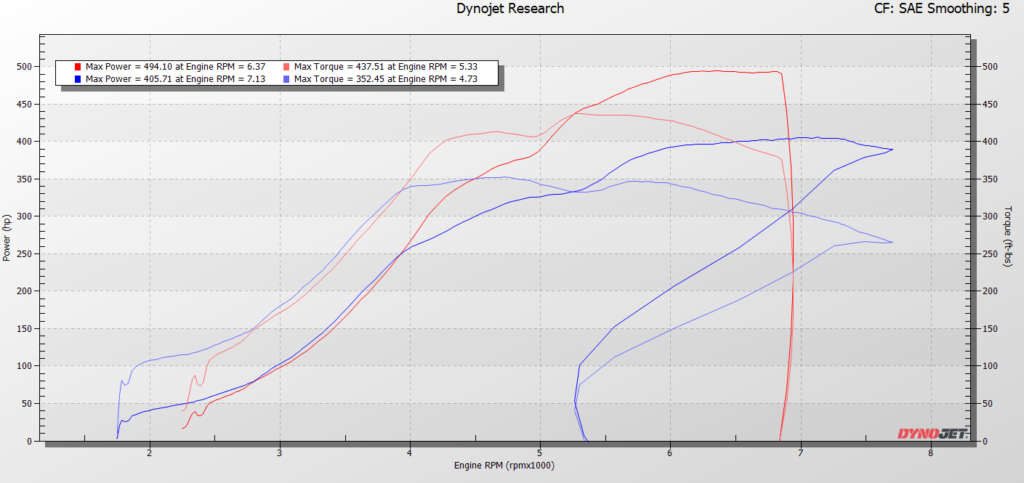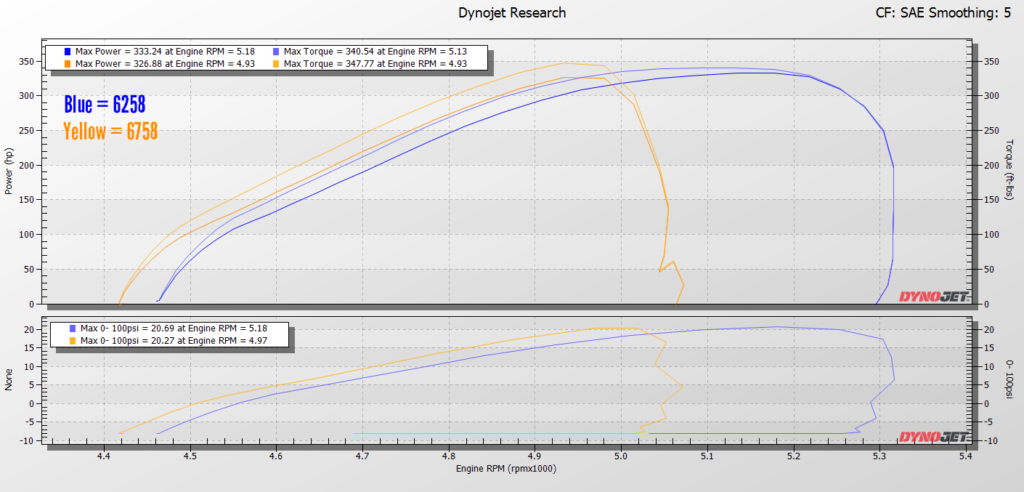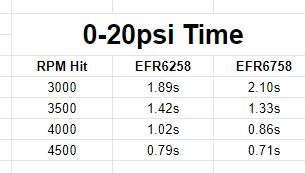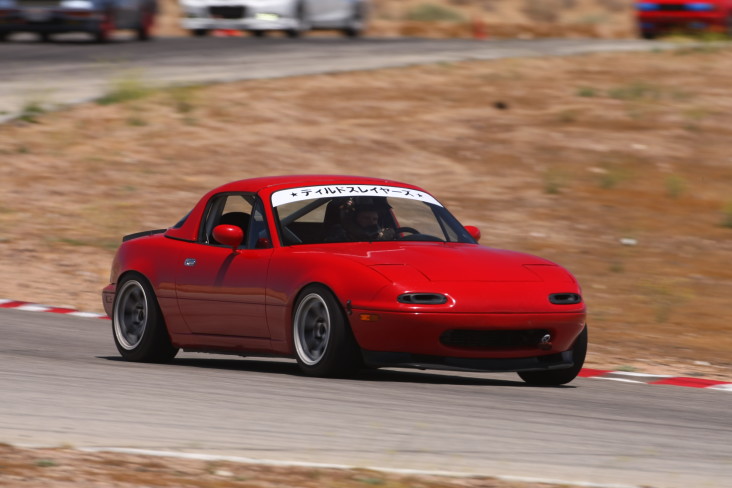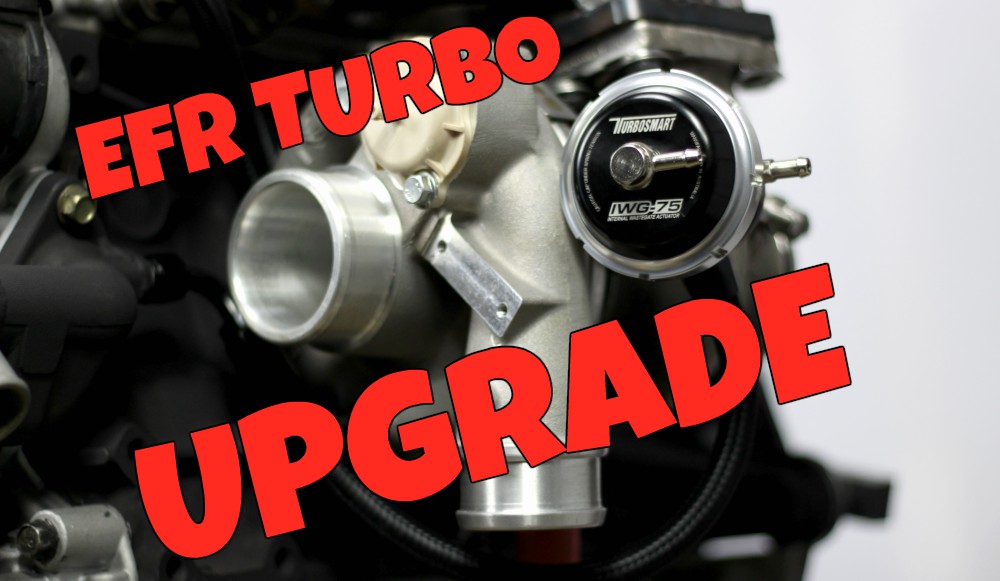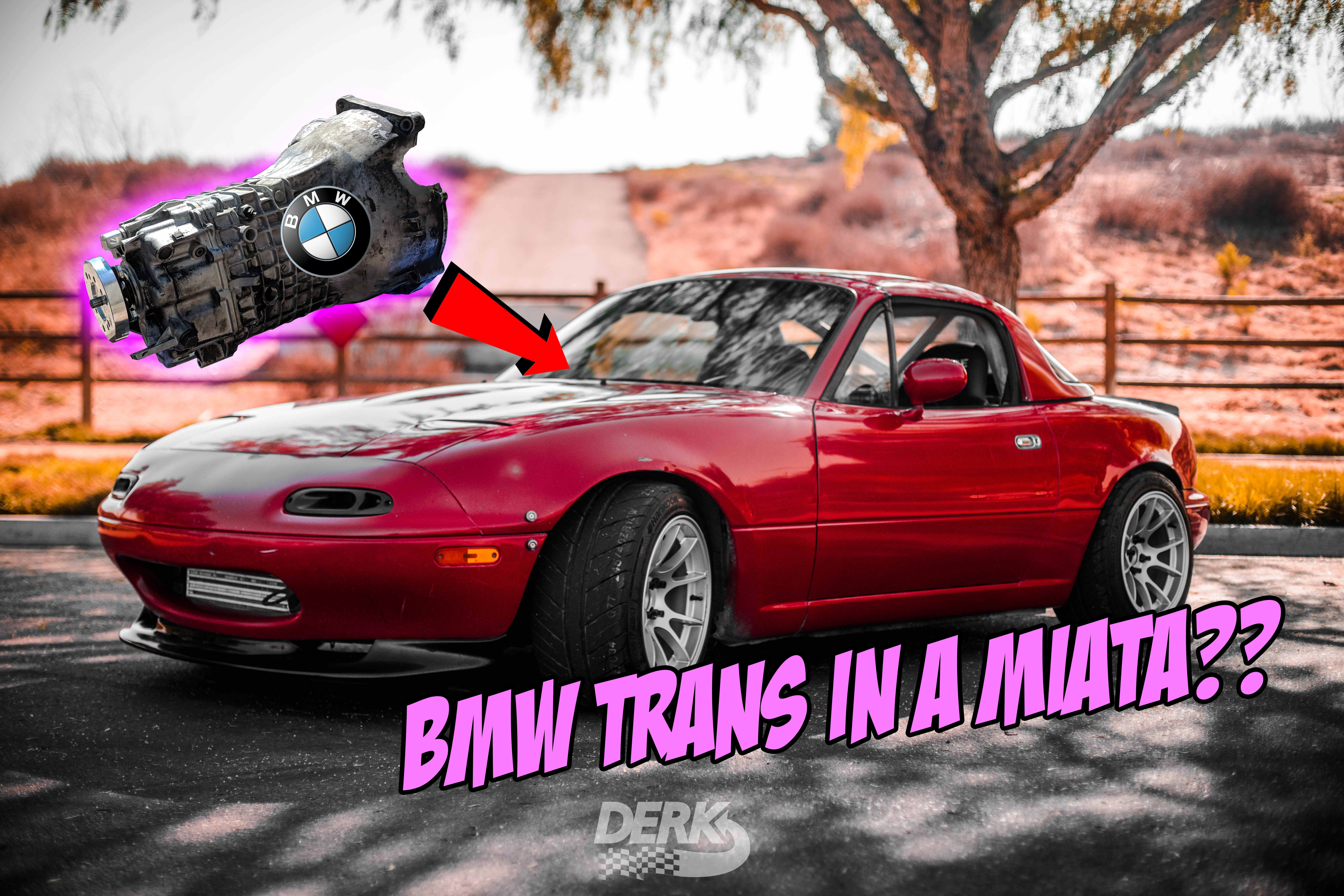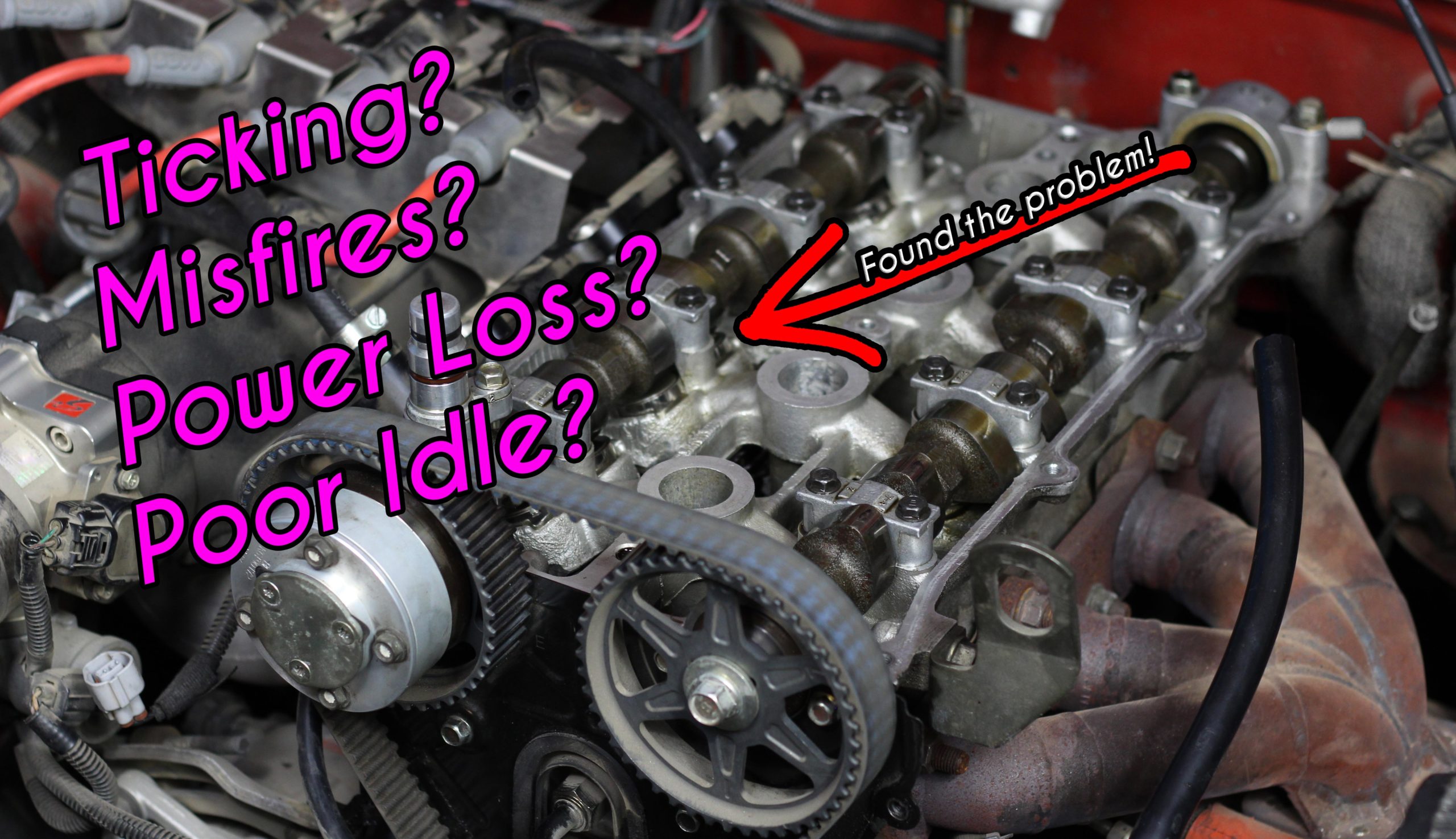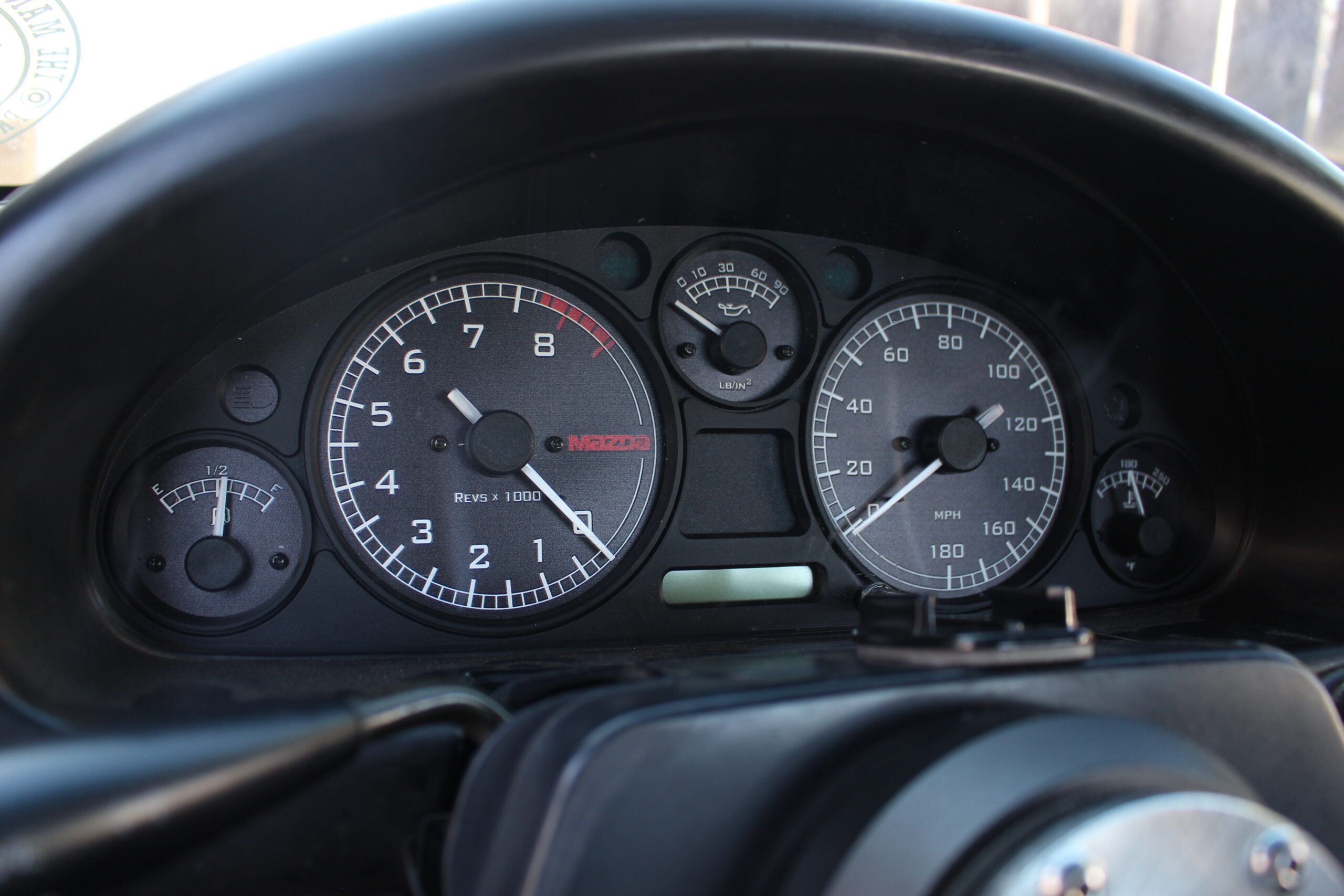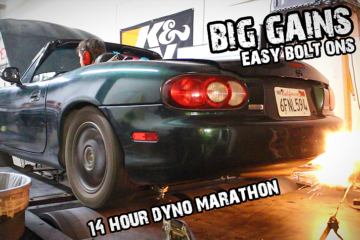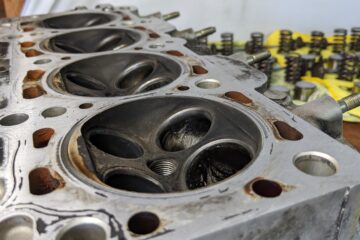Here we are once again at my second home, Advanced Engine Dynamix. This time it’s with the VVT Beast Miata, which hasn’t been on the dyno in 2 years. Will the engine still produce good numbers? Will the new Kraken Exhaust System flow well? But the biggest question that will be answered today, which turbo is better – the Borg Warner EFR6258 or EFR6758? Hotly debated over on the forums for years, it ends here. All it took was a 14+ hour day on the dyno!
First up [click any dyno image for a larger version] is just tweaking the tune a bit to get the engine and turbo system back up to full potential after I changed out the ignition system, shaved the head (bumping it from 8.4:1 to 8.8:1 compression, measured), and installing an entirely new manifold and exhaust system. The top chart is the current 2021 run, with the EFR6258, at about 20.5psi. The chart below it is an overlay of the dyno after the original build was completed in 2017 (Blue) along with a checkup at 10,000 miles in 2019 (Red). Both at 21.0psi. I was pleased to see that the engine is still making the same great power, and spooling up as fast as ever on the new Kraken manifold. ALL runs today will be on E85.
The main point of today is to put these 2 turbos against each other. The only difference between them is a larger compressor (67mm vs 62mm exducer, 53.9mm vs 49.6mm inducer). They both use the same 58mm turbine wheel and 0.64 A/R exhaust housing. Not only did I want to do a big fat mega pull and compare the powerband across the whole RPM range (This demonstrates boost threshold, not lag, aka the lowest RPM that a given turbo is able to produce a certain amount of boost) but I also wanted to test the transient response. This should show how “laggy” each turbo is. Picture rolling on the highway, at 4000RPM. Each turbo might be able to hit full boost at 4000RPM, but how long will it take each one to hit that boost when you step on the throttle? A larger compressor is heavier and takes more energy to spin up when you slam the throttle, even at high RPM. This is something that a dyno pull from low RPM doesn’t always demonstrate. But I had an idea, check this out:
By doing dyno pulls starting from various RPM’s it’s possible to visualize how quickly the torque comes on by doing the same test with both turbos and overlaying the graphs; and by using datalogs it’s possible to measure exactly how quickly each turbo can achieve a certain boost when full throttle is applied. The test I did was going from 0-20psi. The images above are a demonstration of this test, but it won’t mean anything until I repeat the same test with the larger turbo – I’ll get to that later in the article!
Why was I smiling… changing a turbo on the dyno wasn’t fun! Maybe because I knew the Miata *might* just make a few extra horsepower by the end of the day.
This was the FIRST pull on the 6758 turbo, literally zero tuning or regard for anything, BIG TURBO GO BRRRR HAHAHA. Seriously thought, when I saw 458whp on the first pull I thought I was hallucinating.
I also had a minor heart attack when I saw it lost 130whp randomly at 7000RPM. Turns out that was the exact moment my coolant temperature sensor died. It started reading 0 degrees, which shut off the boost controller. A quick jumper in the coolant temp sensor plug was a band-aid for the situation, locking the temperature at 180 degrees, as seen by the ECU.
After turning the boost controller up to 100% duty cycle (not exaggerating) we were able to crank out 497whp and 437wtq from the EFR6758. Absolutely ridiculous. Boost peaked at 5500RPM at just over 32psi, but despite the boost control being turned up as high as it could go, and having a 21psi spring in the wastegate, the boost kept falling off to about 26psi by redline. What gives? Normally, you can use a boost controller to achieve about double the pressure of the wastegate spring. But there’s an exception – when the exhaust pressure is so high that it overpowers the spring. Remember, the bigger compressor is now forcing more air through the engine and squeezing all that exhaust through the same turbine, which leads to higher exhaust pressure. There is a fix for this, which will be getting its own full video. But even if I had the proper boost control – it wouldn’t have mattered. The 340LPH fuel pump and 1000cc injectors were operating well out of their “safe” range. So we found the limit of 3 things at once. Hey, content!
Hooray! Horsepower! But wait… I thought this was a touge/autocross/response build?! Here’s where it gets real interesting. Look at an overlay of a full power pull from both turbos. Where is the loss in low RPM power? Since these turbos have the same turbine and exhaust housing, they can both achieve boost at the same RPM – they have the same boost threshold. But look at that high RPM power, wow!
Checking out the “transient response test” on the larger 6758 was one of the biggest surprises of the night. Here are the 4000RPM (top) and 4500RPM (bottom) hits. The slope of the lines indicate how fast the power comes on with each turbo. In the lower box you can see how quickly the boost is climbing for each turbo. And I’ll bet if I didn’t label them – you wouldn’t even be able to tell which is the bigger turbo! (Note that one line being “higher” is just from the throttle being opened at a slightly different RPM, the slope shows how fast the torque is building.) And here’s a full chart of the data for all the hits I did at every RPM for each turbo:
You’ll notice on the chart that in some rows the larger 6758 actually recorded a faster spoolup time in the logs. Now this could be that the engine or air temperature was slightly different than earlier in the day, or that the exact RPM wasn’t perfectly the same for each turbo (+/- 100RPM), and I only did each test once for each turbo. I am only human and it was nearly in the middle of the night by the time I was testing the 6758! But the possible inconsistency doesn’t really matter – simply because of how close the numbers are. For all intents and purposes, these two turbos spool up essentially the same. TL;DR – the EFR6758 is the clear winner in my book, and is the new permanent turbo for my car.

